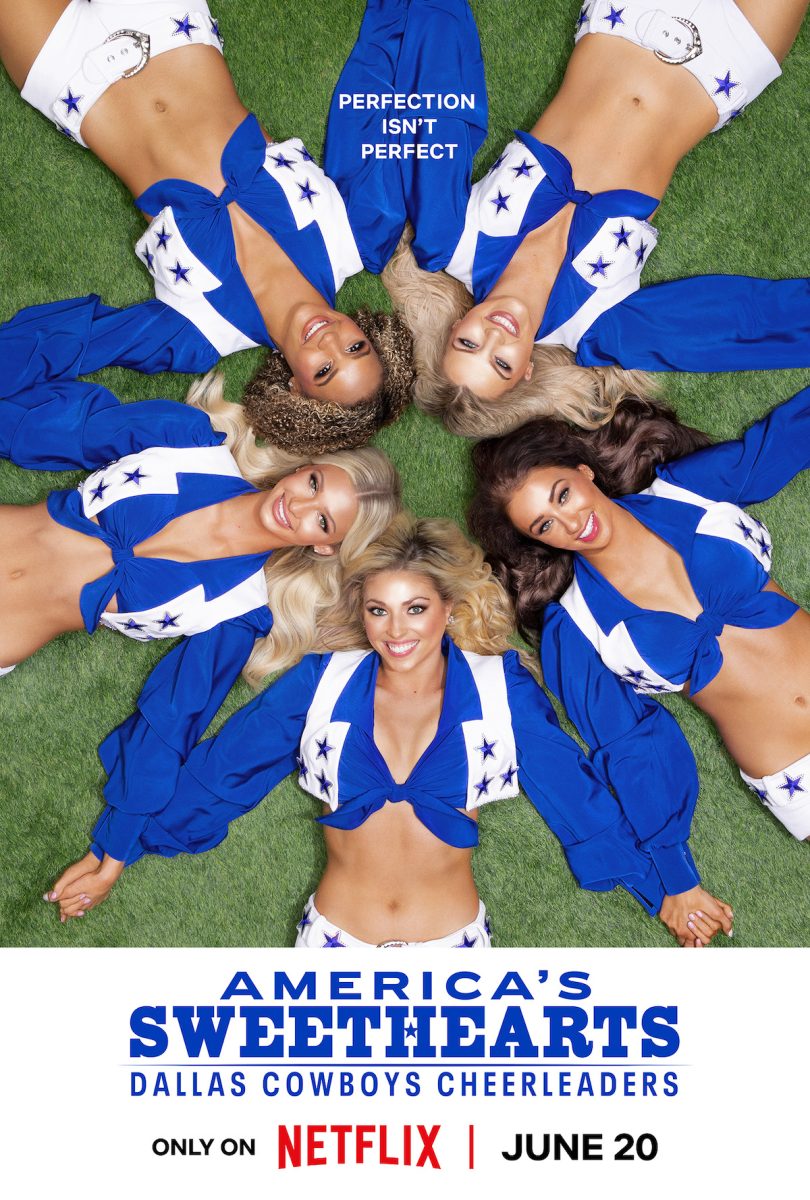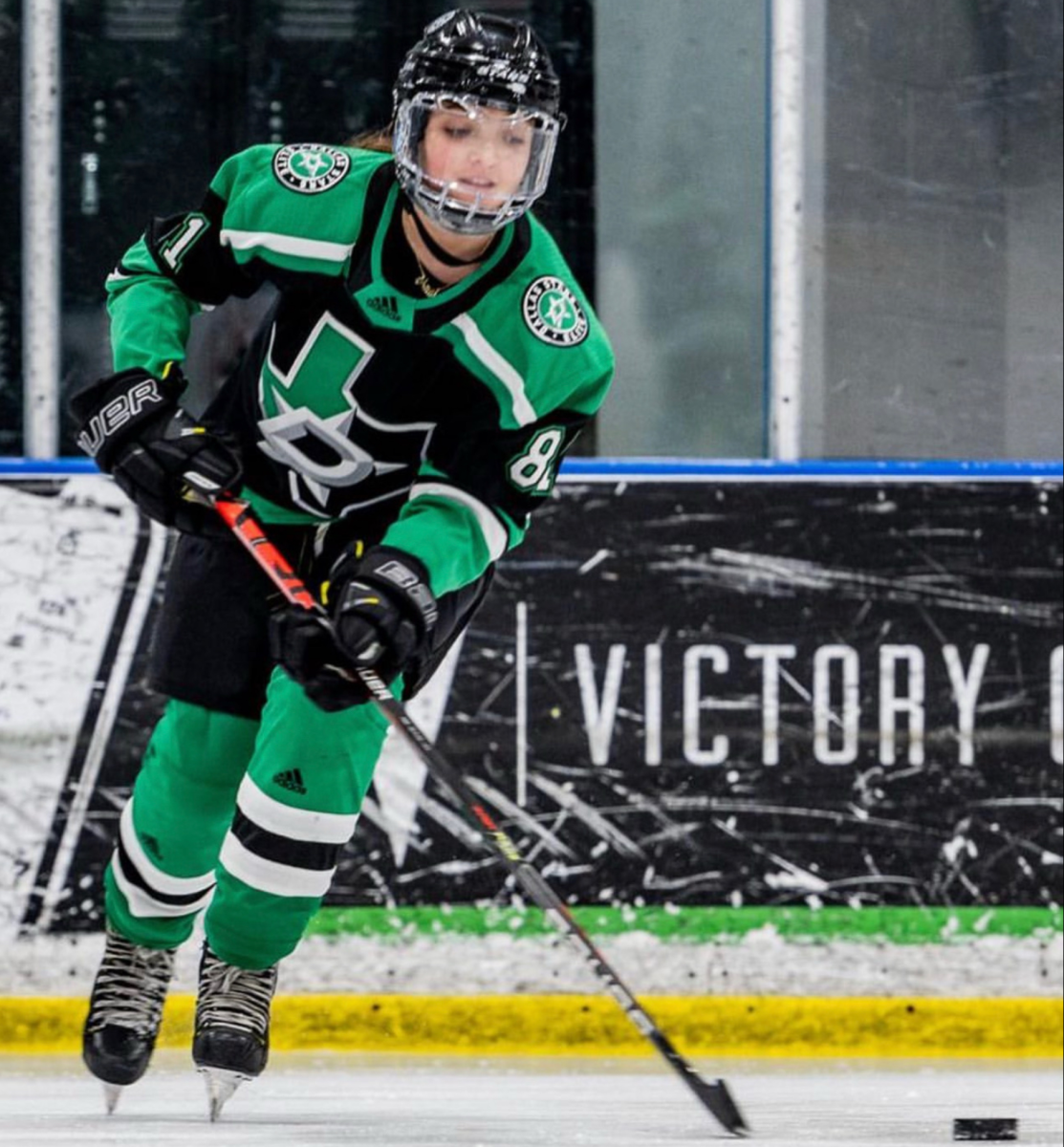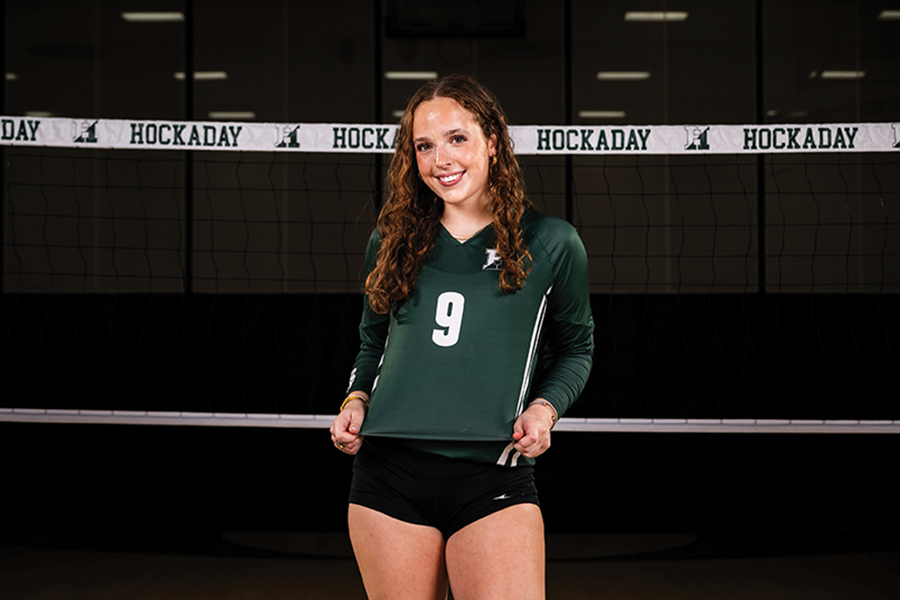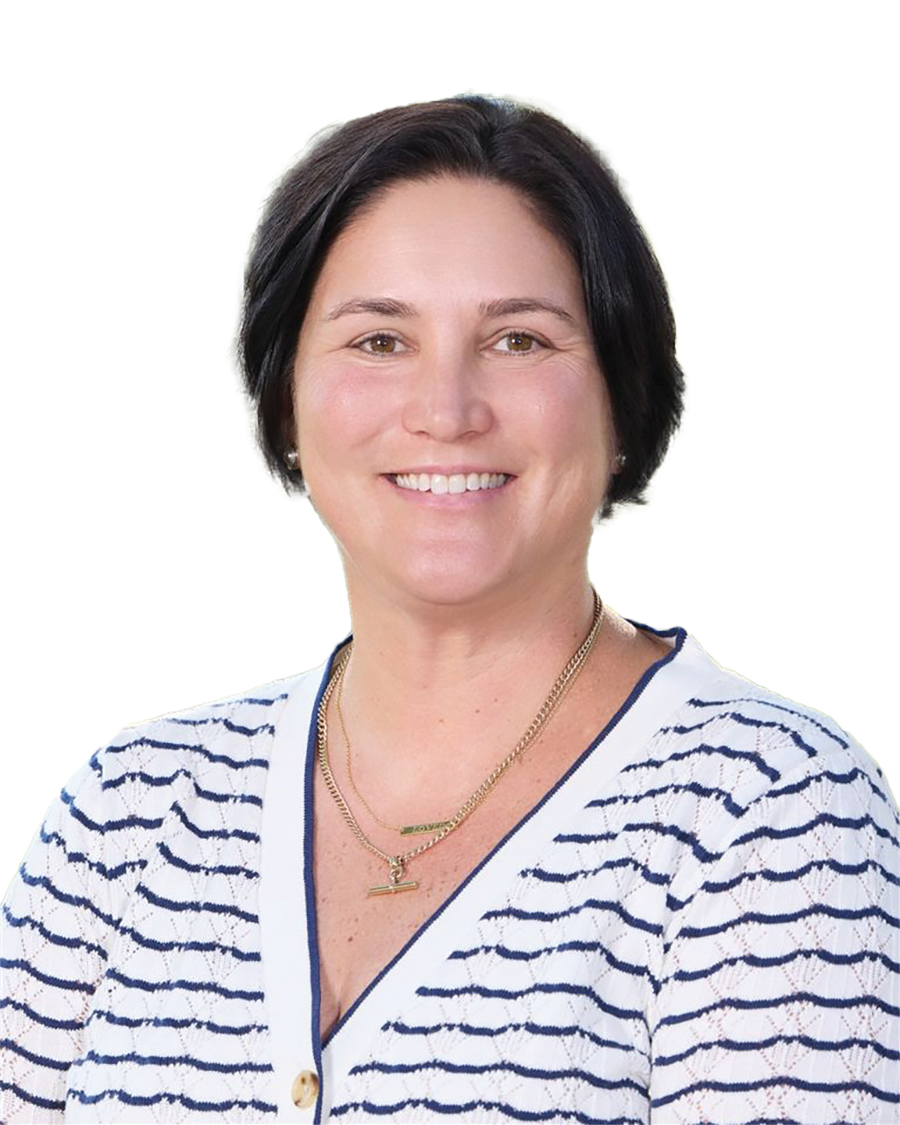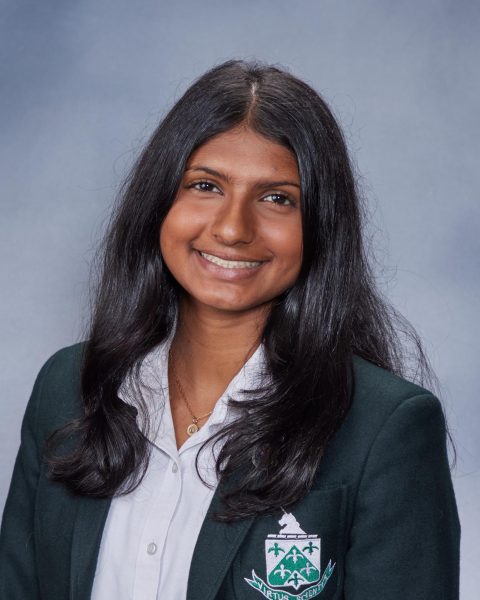Striding down the football field, pom-poms in hand, the Dallas Cowboys Cheerleaders (DCCs) perform their signature “Thunderstruck” routine with beaming faces. Little does the crowd know that behind each smiling face are countless hours of training and relentless pressure to perform perfectly in the spotlight.
The DCCs, also known across the country as “America’s Sweethearts,” are a professional football cheerleading squad, known for their iconic kick line, stylish uniforms and intense tryouts.
Their new series—“America’s Sweethearts: Dallas Cowboys Cheerleaders”—has gained popularity since its release on Netflix. Many viewers have become obsessed with the show as it reveals the sport’s intense physicality that not only the DCCs, but cheerleaders everywhere must maintain.
The show also addresses the stereotypes associated with cheerleading by spotlighting the strenuous hours of practice and complex jobs that the cheerleaders have. While many assume the girls are just dancers, the show delves deeper into how the cheerleaders must balance the sport with their professional lives.
St. Mark’s Cheer co-captain senior Betsy Johnson agrees that many people in the audience don’t realize how much work is put into their routines. Even though a simple five-minute routine might seem short, learning all the moves can take days.
“I feel like they touched on things that most people don’t know about cheer unless you actually researched how challenging it really is,” Johnson said. “You might look at it and think that it looks easy but in actuality, it shows the harder parts of it.”
Some Hockaday students participate in the St. Mark’s cheerleading program, but there are many misconceptions about their sport. They practice and perform mostly on the St. Mark’s campus, leading many people to overlook the fact that cheerleading is an official fall sport.
As a result of this, cheer co-captain senior Anne Cahoon believes that people discredit how much work goes into cheer. During football season, cheerleaders’ schedules are packed. From waking up at 6 a.m. for practice to arriving at the game two hours early to set up, the team gets no rest.
“People assume we just stand on a sideline, but there’s a lot of behind-the scenes stuff that goes on that people don’t realize,” Cahoon said.
While not as intense as professional cheerleading, St. Mark’s cheerleading tryouts still incorporate rigorous conditioning into their practices such as running the bleachers and body weight workouts. However, out of all these conditioning routines, their annual three-mile run in August stands out as one the most challenging.
“Most of the games are probably 95 degrees Fahrenheit by the time they start at 7 p.m.,” St. Mark’s Cheer Coach Whitney McKenna said. “I think a lot of the workouts are based on getting adjusted to the heat and making sure you have the right cardio levels to be able to jump around three to four hours at the game.”
After watching the DCC show, many criticized the team coaches, for the harsh rules and expectations they put on the girls. Yet McKenna believes there’s a good balance between rules and having fun.
“From the high school perspective, I want cheer to be a positive outlet, and I think a lot of that stems from the coach and the expectations you set,” McKenna said. “From my coaching style, I think the team knows that we have a mutual level of respect, so I don’t personally choose to yell.”
Cheerleaders nationwide draw inspiration from the DCCs by incorporating their signature high kicks and jump splits into their routines. The ability of both the DCCs and St. Mark’s cheerleaders to practice for countless hours and perform under constant pressure serves as a powerful reminder to skeptics, challenging the stereotypes that surround the sport.
“There are definitely stereotypes, but you don’t have to look like a cheerleader to be one,” Johnson said. “It all just depends on the work that you put in and that’s it.”


